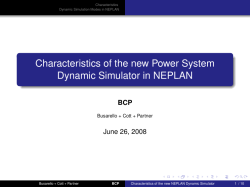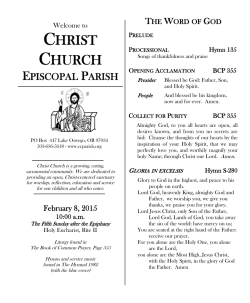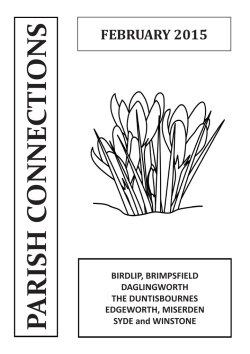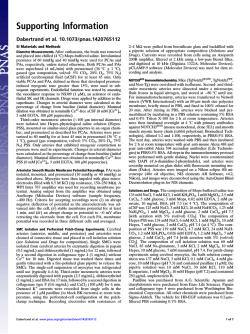
Visible spectrophotometric determination of Losartan potassium in
Available online at www.scholarsresearchlibrary.com Scholars Research Library Der Pharmacia Lettre, 2015, 7 (1):75-80 (http://scholarsresearchlibrary.com/archive.html) ISSN 0975-5071 USA CODEN: DPLEB4 Visible spectrophotometric determination of Losartan potassium in pure and dosage forms by ion-ion association reactions using BCP and BPB reagents M. Siva Kishore2, K. Kiran Kumar2, Golkonda Ramu1,3 and Chintala Rambabu1* 1 2 Department of Chemistry, Acharya Nagarjuna University, Guntur, India Department of Chemistry, K.B.N. P.G. College, Vijayawada, Andhra Pradesh, India 3 Department of Chemistry, Sir C.R.Reddy College Post Graduate Courses-Eluru, India _____________________________________________________________________________________________ ABSTRACT Two simple and sensitive visible spectrophotometric methods (Method-A and Method-B) have been developed for the determination of Losartan potassium in bulk drug and pharmaceutical formulations. The developed methods involve the formation of colored chloroform extractable ion-ion association complex of Losartan potassium with Bromo cresol purple (Method-A) and Bromo phenol blue (Method-b) in acid medium, exhibiting absorption maxima at 425 and 430nm respectively and obeying Beer’s law in the concentration range of 2.5 -12.5 µg/ml for the two methods with good correlation. Statistical analysis of the results of the proposed methods reveals high accuracy and good precision. The proposed methods could be successfully extended to the commercial pharmaceutical formulations containing Losartan potassium. Keywords: Losartan potassium, Bromo cresol purple, Bromo phenol blue, Ion-ion association complex, Spectrophotometry _____________________________________________________________________________________________ INTRODUCTION Losartan potassium (LOK) is an oral drug which belongs to the class of angiotensin receptor blockers (ARBs) [1-3]. It is prescribed for the treatment of hypertension. It is also used to lower the risk of strokes in patients with high blood pressure and an enlarged heart. It is chemically known as 2-n-butyl-4-chloro-5-hydroxymethyl-1-((2-(1Htetrazol-5-yl)(biphenyl-4-yl)methyl) imidazole potassium salt and its structure is represented in Fig.1. Fig.1. Chemical structure of Losartan potassium 75 Scholar Research Library Chintala Rambabu et al Der Pharmacia Lettre, 2015, 7 (1):75-80 ______________________________________________________________________________ An extensive literature survey was carried out and found some methods for the determination of LOK drug substance in tablets. These methods employ techniques such as capillary electrophoresis (CE)[4], high performance thin layer chromatography (HPTLC)[5], supercritical fluid chromatography (SFC)[6], high performance liquid chromatography (HPLC) with UV detection and fluorescence detection[7] mostly in biological fluids, UV and UV derivative spectrophotometric methods [8-9], kinetic spectrophotometric methods [10-11] and UV and HPLC methods [12], and a liquid chromatography electrospray ionization tandem mass spectrometric method [13] for the simultaneous determination of LOK and its major active metabolite in human plasma. The present work describes the author’s attempts in developing new visible spectrophotometric methods for the determination of LOK using some acidic dyes. The methods developed by the author involves the formation of ion association complex reaction of the cited drug with some acid dyes such as Bromo Cresol Purple [BCP] and Bromo Phenol Blue [BPB], in acidic medium (pH-3.0). MATERIALS AND METHODS 2.1 Instrument An ELICO SL-159 UV–VIS spectrophotometer (India) with 1.0 cm quartz cells was used for all absorbance measurements under the following operating conditions. An Elico model LI -10 (India) pH meter was used for pH measurements. 2.2 Reagents and solutions All chemicals were of analytical reagent grade and double distilled water was used throughout the study. 0.2% Bromo cresol purple (BCP, Ranbaxy Fine Chemicals Ltd., New Delhi) solution dissolving 200 mg of BCP in 100 ml of water. was prepared by 0.2% Bromo phenol Blue (BPB, Ranbaxy Fine Chemicals Ltd., New Delhi) solution prepared by dissolving 200mg of BPB in 100 ml of water. Buffer solution, pH 3.0: Prepared by mixing 50ml of 0.2 M Glycine acetate solution with 11.4 ml of 0.2 M HCl solution and diluted to 200ml with doubly distilled water. The pH of the solution was adjusted to an appropriate value with the aid of a pH meter. 2.3 Preparation of standard stock solution A stock standard solution of concentration 1mg/ml was prepared freshly by dissolving 100 mg of LOK in 100 ml double distilled water. Final working standard solution of LOK of 50 µg/ml for Method A and Method-B was prepared by diluting 5.0 ml solution of the above solution to 100 ml with double distilled water. 2.4 Preparation of sample solution Ten tablets were weighed, finely powdered and mixed thoroughly.An accurately weighed amount of powder equivalent to 50 mg of drug was transferred into a 50 ml volumetric flask and was dissolved with double distilled water and shaken for 10 min. Then an aliquot portion of this solution was diluted to 100.0 ml with distilled water to get sample solutions of 50µg/ml for BCP/ BPB and analysed as given in the above proposed assay procedures. 2.5 Procedures for Methods A & B Aliquots of working standard solution of LOK (50µg/ml for Method A and Method B) ranging from 0.5 – 2.5 ml were transferred into a series of 125ml separating funnels. To these 2.0 mlof acidic dye (BCP/ BPB) was added. The total volume of aqueous phase was adjusted to 10.0ml with Glycine buffer solution of pH - 3.0 and 10.0ml of chloroform was added. The contents were shaken for 2 minutes. The two phases were allowed to separate and the absorbance of the yellow colored chromogenic was measured at 425/430 nm against reagent blank (set zero) and the amount of LOK present in the sample solution was computed from its calibration curve. RESULTS AND DISCUSSION 3.1 Absorption Spectra The absorption spectrum of each proposed method was recorded against distilled water and was represented in Fig. 2&3 for BCP and BPB. The absorption curves of the colored species in each method show characteristic absorption maxima at 425 nm for BCP & 430 nm for BPB where as the blank in each method has low or no absorption in this region. 76 Scholar Research Library Chintala Rambabu et al Der Pharmacia Lettre, 2015, 7 (1):75-80 ______________________________________________________________________________ Fig.2. Absorption spectrum of LOK with BCP Fig.3. Absorption spectrum of LOK with BPB 3.2 Optimization of the developed procedures A number of preliminary experiments for the proposed methods were established for rapid and quantitative formation of colored ion-pair complex to achieve the maximum stability and sensitivity. Optimum conditions were fixed by varying one parameter at a time while keeping other parameters constant and observing its effect on the absorbance at 425 nm for BCP and 430 nm for BPB. The following experiments were conducted for this purpose and the conditions so obtained were incorporated in recommended procedures. The optimum conditions established for methods were described in Table. 1. Table: 1. OPTIMUM CONDITIONS ESTABLISHED IN THE PROPOSED METHODS Parameter Optimum range λmax (nm) BCP λmax (nm) BPB Effect of buffer (3.0) on color development. Choice of organic solvent for extraction of the colored complex. Effect of shaking time on extraction. 410 – 430 410 – 440 Conditions in procedure 425 430 0.5-2.0ml 2.0 ml Variation of concentration or pH beyond the upper and lower limits resulted in low absorbance values. Chloroform Chloroform Chloroform was preferred for its selective extraction of the colored drug-dye complex from the aqueous phase. 1 - 5 min 2 min Effect of temperature on the colored species. Stability of the colored species in organic solvent. Laboratory temperature (28+30OC) 1 - 60 min 1 - 60 min Laboratory temperature Remarks Constant absorbance values were obtained for shaking periods between 1-5 min. At low temperature (< 200C) the extraction of colored species was found to be improper. At high temperature (> 350C) the stability of the colored species was found to be less. 30 min 3.3 Validation Precision: The precision (intraday variation) studies were performed on six replicate measurements of standard solution, and the percent relative standard deviation (% RSD) and percent range of error (at 0.05 and 0.01 confidence limits) were calculated in each proposed methods and the results are given in Table 2. Table: 2. STATISTICAL DATA OF QUANTITATIVE PARAMETERS FOR THE PROPOSED METHODS Name of the Parameter Maximum Wavelength λmax Beer's Law Limits mcg/mL Optimum Photometric Range mcg/mL Sandell's Sensitivity(µg/cm2/0.001 Absorbance) Molar Absorptivity lt/mole/cm Slope (b) Intercept(a) Correlation Coefficient ( r ) Limit of Detection (LOD) mcg/mL Limit of Quantification (LOQ) mcg/mL Standard Deviation on Slope(Sb) Standard Deviation on Intercept(Sa) Standard Error on Estimation(Se) BCP 425 2.5-12.5 3.0 -10.0 0.0378 1.222x104 0.0234 0.0103 0.9994 0.03428 0.114 0.0004636 0.0002674 0.003665 BPB 430 2.5-12.5 3.5-10.0 0.0403 1.148x104 0.0238 0.0023 0.99501 0.010024 0.334 0.001378 0.0007952 0.010898 Accuracy (Recovery): The recovery was assessed by determining the agreement between the measured standard concentration and added known concentration to the sample (standard-addition technique). The test was done by 77 Scholar Research Library Chintala Rambabu et al Der Pharmacia Lettre, 2015, 7 (1):75-80 ______________________________________________________________________________ spiking the pre-analyzed tablet powder with pure LOK at three different levels (50, 100 and 150% of the content present in the tablet powder (taken)) and the total was found by the proposed method. Each test was repeated six times. In all the cases, the recovery percentage values ranged between 99.63 and 99.73%. Closeness of the results to 100% showed the fairly good accuracy of the proposed methods. Linearity: The calibration curves were constructed by plotting the absorbance’s of colored ion-pair complexes against various concentrations of LOK (2.5-12.5µg/ml). The regression equations derived using the least-squares method for the calibration curves of LOK were Y=0.0234 X + 0.0103 (R2=0.9994) for Method A(BCP) and 0.0238 X + 0.0023 (R2=0.99501) for Method B (BPB) respectively. The results showed an excellent correlation between absorbance and concentration of drugs within the concentration range indicated above for both the methods proposed (Table-2). Fig.4: Beers law spectrum of LOK with BCP Fig.5: Beers law spectrum of LOK with BPB Sensitivity (LOD and LOQ): In this study, limit of detection (LOD) and limit of quantification (LOQ) were based on the standard deviation of the response and the slope of the corresponding curve. The values of LOD and LOQ for Method-A (BCP) and Method-B (BPB) are given in Table 2. Ruggedness: The ruggedness of the developed methods was expressed as RSD% of the same procedures applied under different laboratory conditions by the same instrument on different days for same standard and tablet dosage forms of LOK. The results showed no statistical differences between the different conditions and instruments suggesting that the developed methods were rugged. 3.4 Analysis of pharmaceutical preparations Commercially available Losartan potassium tablets were subjected to analysis by the proposed methods. Results obtained by the proposed methods presented in Table. 3 LOK was successfully determined in pharmaceutical formulations without any interference from the excipients present in the tablets. The results were compared statistically with those obtained by a (UV reference method) by applying Student’s t-test for accuracy and F-test for precision (Table. 3). At the 95% confidence level, the calculated t- and F-values did not exceed the tabulated values (t = 2.262 and F = 5.05) suggesting that the proposed methods are accurate and precise. Table: 3. DETERMINATION OF LOSARTAN POTASSIUM IN DOSAGE FORMS Method BPB BCP Proposed Method reference method Amount % Recovery by proposed t F [9] found* method** ±S.D value Value (mg) ±S.D Tablet-I 25 0.433 1.65 24.96 ± 0.14 99.95±0.28 24.97±0.18 Tablet-I 25 0.989 3.24 24.90 ± 0.10 99.71±0.42 *Average ± standard deviation of six determinants. Theoretical values at 95 % confidence limits t = 2.365 and F = 4.88. ** Average of five determinations Pharmaceutical Formulation Labeled Amount (mg) 3.5 Nature of the color Species An attempt has been made to indicate the nature of colored species in each proposed method for Losartan potassium tentatively based on analogy of reactive functional moiety in drug and reagents. As Losartan potassium possesses 78 Scholar Research Library Chintala Rambabu et al Der Pharmacia Lettre, 2015, 7 (1):75-80 ______________________________________________________________________________ secondary amine group involves in ion association complex formation with acid dyes BCP and BPB which is extractable into chloroform from the aqueous phase. The protonated nitrogen moiety (positive charge) of Losartan potassium is expected to attract the oppositely charged part (negative charge) of dye and behave as a single unit being held together by electrostatic attraction. Based on analogy the structures of ion association complexes are shown in Scheme-1 given below. The proposed methods do not involve any stringent reaction conditions and offers the advantages of high stability (more than 24hours).The statistical analysis of the results by t and F- tests showed that, there is no significant difference in accuracy and precision between the proposed methods and reference method. Scheme-1: Ion pair associative complex for Losartan potassium with BCP & BPB CONCLUSION The reagents provide simple and sensitive methods for the spectrophotometric determination of LOK in pure and pharmaceutical formulations. These methods have been successfully applied to the determination of LOK in pure and dosage forms. The proposed methods can be successfully applied for routine analysis of LOK in quality control and research laboratories. Acknowledgements The authors are very much thankful to Acharya Nagarjuna University for providing research facilities and getting registration REFERENCES [1] A.Chiu, D.Mc Call, W.Price, P.Wong, J.Carini, J.Duncia, S.Yoo, A.Johnson, P.Timmermans, J. Pharmacol. Exp. Ther., 1990, 252, 711. 79 Scholar Research Library Chintala Rambabu et al Der Pharmacia Lettre, 2015, 7 (1):75-80 ______________________________________________________________________________ [2] P.Wong, W.Price, A.Chiu, J.Duncia, D.Carini, R.Wexler, A.Johnson, P.Timmermans , J. Pharmacol. Exp.Ther,.1990, 256,211. [3] C.L.Furteck, Lo MW, J.Chromatogr., 1992, 573,295. [4] R.C.Williams, V.L.Alasandro, V.L.Fasone, R.J.Boucher, J.F.Edwards, J.Pharm.Biomed.Anal.,1996, 14, 539. [5] K.E.McCarthyE, Q.Wang, E.W.Tsai, R.E.Gilbert, D.P.Ip, M.A.Brooks, J. Pharm. Biomed. Anal., 1998, 17, 671. [6] Soldner A, Spahn-Langguth H, Mutschler E, J.Pharm.Biomed. Anal., 1998, 16, 863. [7] D.Farthing, D.Sica, I.Fakhry, A.Pedro, T.W.Gehr, J.Chromatogr.,1997, 704,374. [8] C.Olga, Lastra, G.Igor, Lemus, J.HugoSa´nchez, F.Renato Pe´rez Facultad de Ciencias Quı´micasy, Casilla, Santiago, Farmace´uticas, Universidad DeChile., 2007, 233, 657. [9] R.Permender, R.Sushila, R.Dharmender, C.Hema, Eurasina journal of analytical chemistry, 2009, l4,1. [10] N.Rahman, M.RazaSiddiqui, S.D.Najmul Hejaz Azmi, Journal of the Chinese Chemical Society, 2006, 53, 735. [11] K.Anuja Kolsure, S.SnehalIngale, A.SumitAbnawe, R.Anuruddha Chabukswar, P.Vishnu Choudhari, S.Bhanudas Kuchekar, Journal of Pharmacy Research, 2010, 3, 9. [12] M.Ansari, M.Kazemipour, F.Khosravi, M.Baradaran, Chem Pharm Bull, 2004, 52, 1166. [13] T.Iwasa, T.Takano, K.Hara, T.Kamei, J. Chromatogr.B.1999, 734, 325. 80 Scholar Research Library
© Copyright 2026









